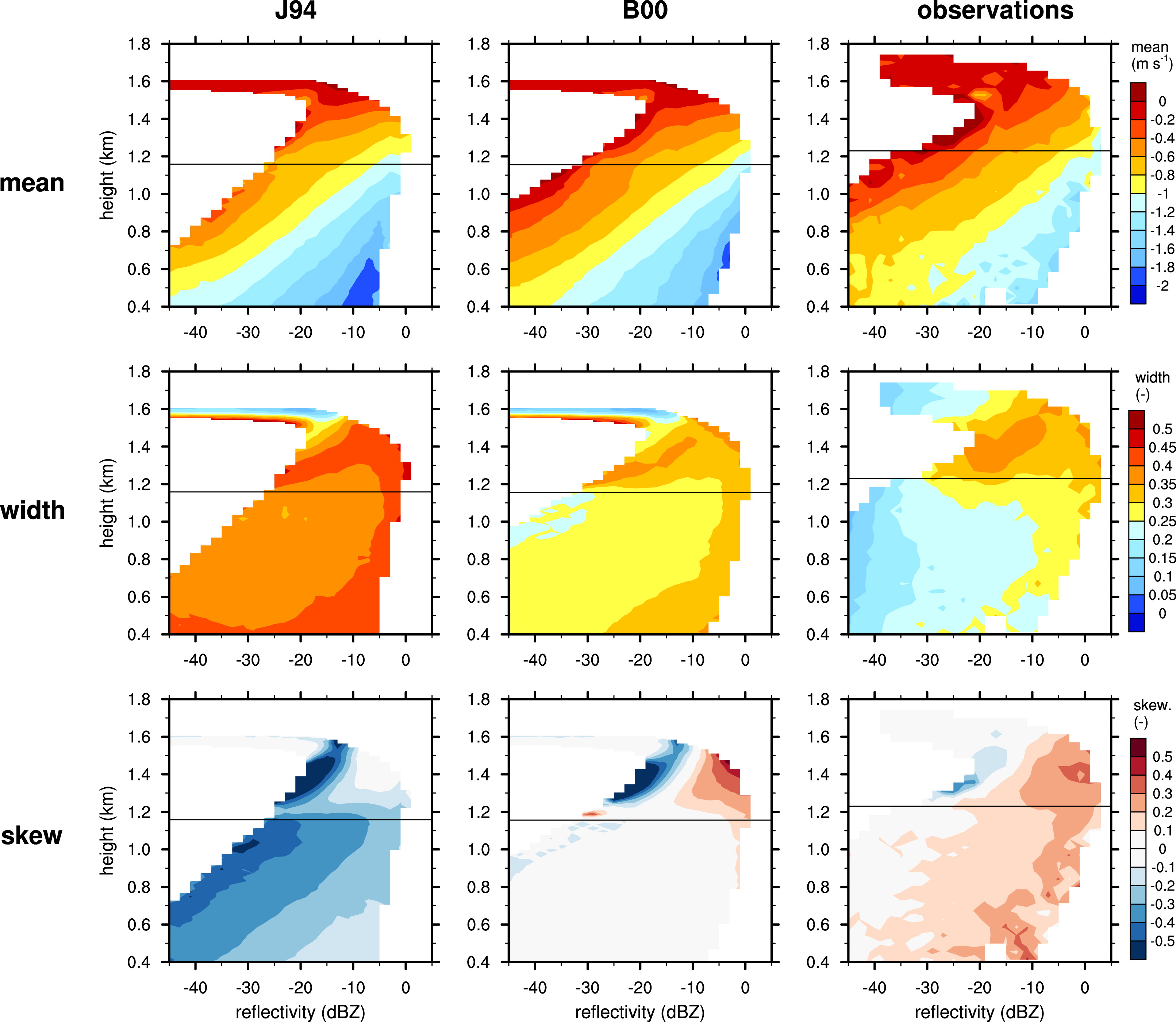Learning about drizzle from a Doppler cloud radar
Submitter:
Fridlind, Ann M. — NASA - Goddard Institute for Space Studies
Area of research:
Cloud Processes
Journal Reference:
Science
Drizzle from shallow clouds over global oceans can lead to profound changes in atmospheric particle concentrations, cloud cover, and sunlight reaching the ocean surface, but how the process gets started remains surprisingly poorly understood. Shown here is a first use of vertically pointing radar measurements over the Azores to evaluate and improve drizzle size distributions in a detailed three-dimensional simulation.
Impact
Thus far, we simply compare radar observations and model simulations of drizzle drop sizes wherever drizzle occurs in each, but the successful use of such observations to improve a model points to the future use of such observations to answer more fundamental questions about drizzle. Namely, such data can next help to understand exactly why drizzle occurs where it does.
Summary
Stratocumulus clouds over the Azores are simulated using two large-eddy simulation models with size-resolved microphysics, and forward-simulated cloud radar Doppler moments and spectra are compared with vertically pointing W-band cloud radar observations. To varying degrees, both models exhibit a tendency to produce too many of the largest droplets, associated with an insufficiently sharp reduction in droplet number concentration at diameters larger than ∼200 µm, where a pronounced shoulder is found for in situ observations. In follow-on work, researchers made, to their knowledge, the first evaluation of three commonly used stochastic collection scheme numerics for use with radar observations. They recommend one of the schemes because it is well converged on a relatively coarse mass grid, stable for large time steps, strictly mass-conservative, and computationally efficient. Implementing that scheme in one of the large-eddy simulation models significantly improved agreement of simulated drizzle properties with observations, but some notable differences remained. Future work will complete the evaluation of other model process numerics for use with radar observations.


